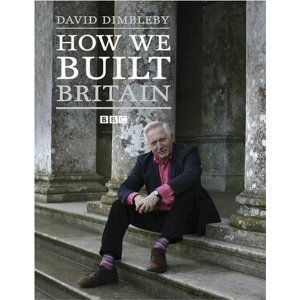Graham Reid | | 1 min read

Anglophiles and architects may naturally be drawn to this six-part series which comes with the subtitle "The Dramatic and Heroic Story of Britain's Architecture". But architects might be disappointed.
Starting in 1066 -- which rather ignores quite a chunk of history -- this digressive series fronted by the eye-twinkling and winking Dimbleby becomes something more like a social history of England -- the rest of Britain is almost scrupulously ignored aside from a journey to Scotland -- with buildings sometimes added in for emblematic effect.
Which means if you come here to find out how and why those great cathedrals, castles, manor houses or even modernist buildings were erected you will go away disappointed. But set aside the misrepresenting title/subtitle and this is an enjoyable enough romp through history in which Dimbleby stops to interview rabbiters and chimney sweeps, clambers up to the roof of great stately piles, drops in to discover some family history in the village of his name and takes a tour of those dark satanic mills and alleyways of a darker Britain.
He travels by Land Rover so there are many helicopter shots of it being driven through impossibly picturesque, sun-soaked country lanes between orderly fields. But he does frequently ignore the obvious to take in some fascinating and less well-known places -- such as the dancehall beneath the Blackpool Tower.
Dimbleby also gets you inside places you might never see (enormous wooden barns, beautifully preserved Victorian homes, a massive and now deserted mental asylum with a huge ballroom for its inmates) and into the breathtakingly beautiful music hall in Leeds which will have you booking a ticket.
Leeds in fact comes off as an interesting microcosm of England's increasing prosperity in the Victorian era: a mill town with suburbs of two-up two-down houses where washing is still strung between houses and a city centre with beautifully preserved shopping arcades of glass and ironwork.
The details of craftmanship -- whether it be in stone or timber -- and the dedication of visionaries throughout the century are the eye-candy here and Dimbleby is a genial, dry host.
So while it might not explain just how Britain was built in a strictly architectural sense, this series certainly illustrates how people formed their world right into the 21st century and Sir Norman Foster's big gherkin.







post a comment